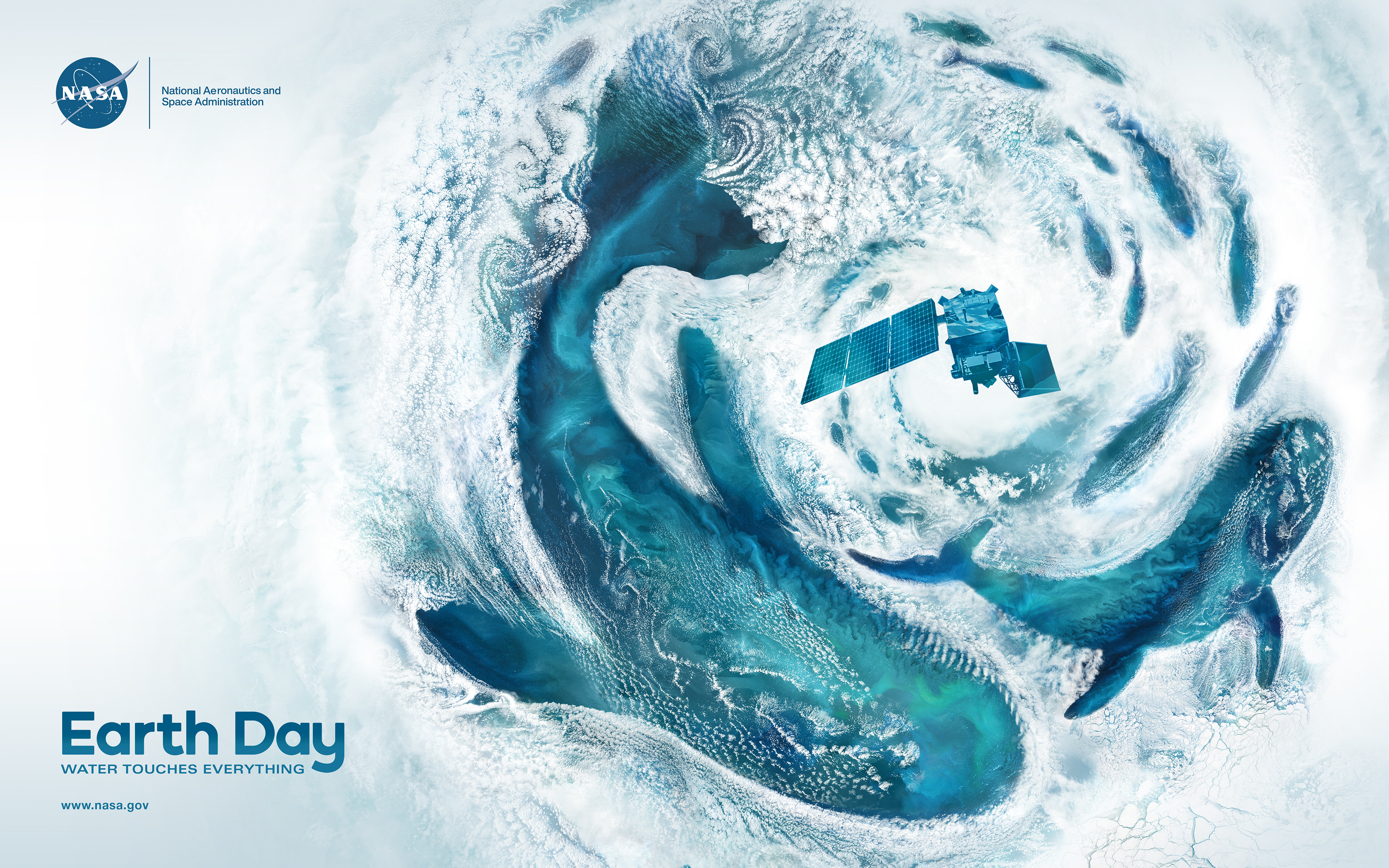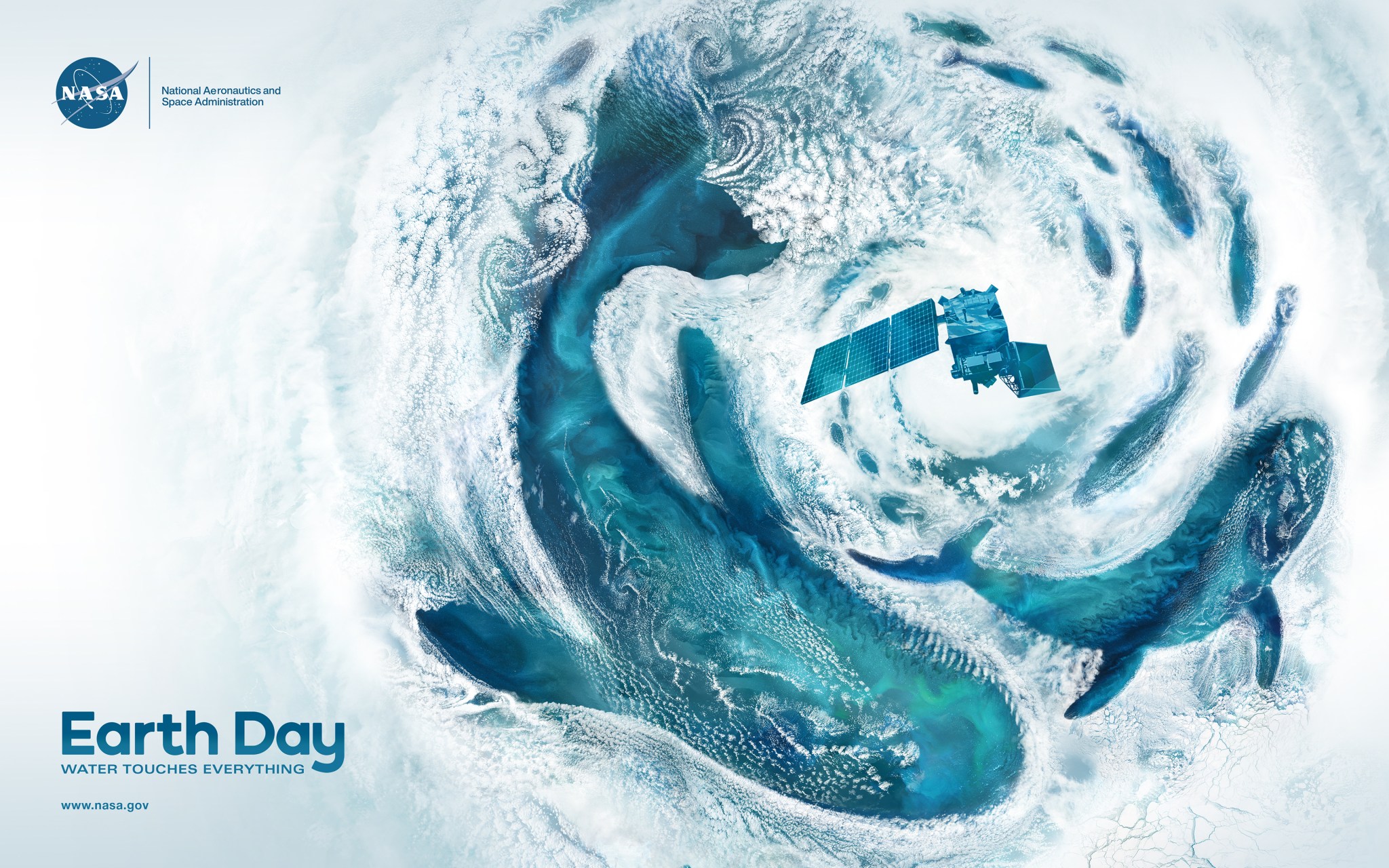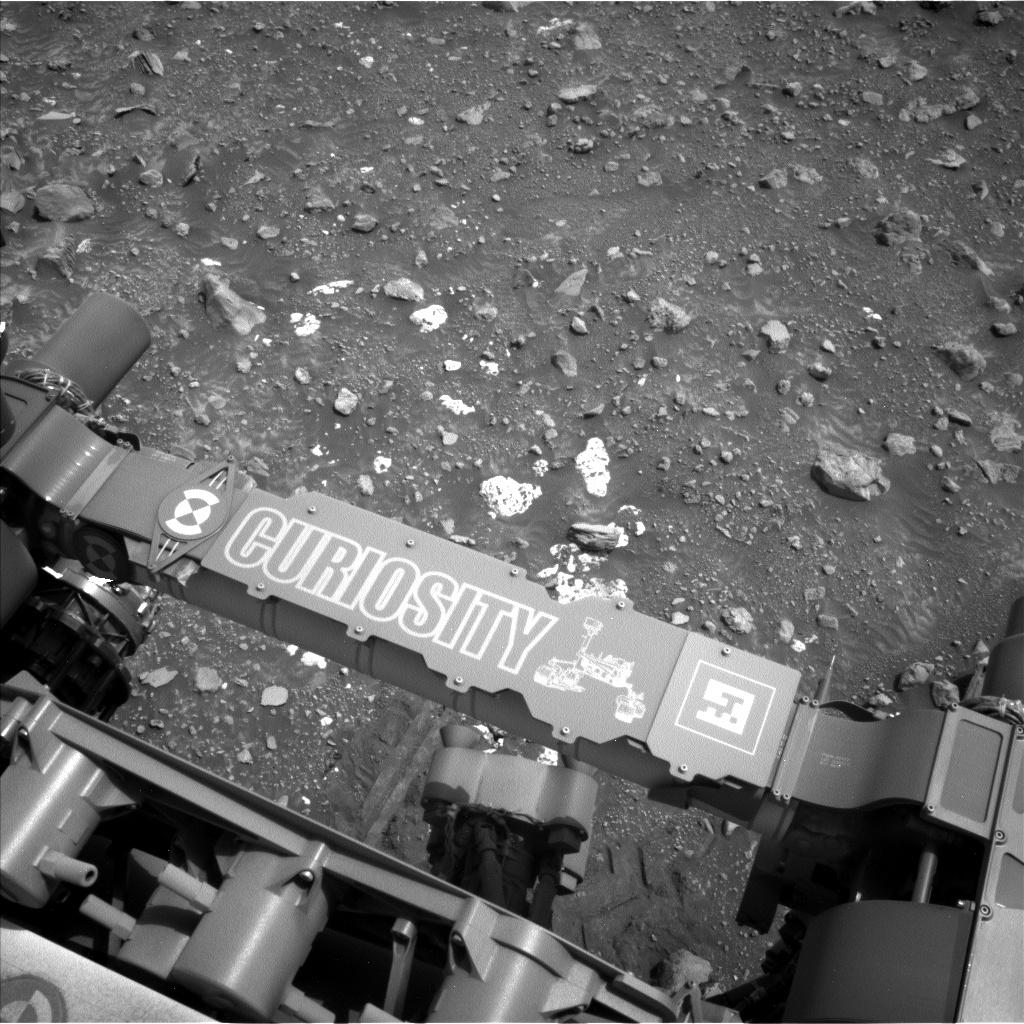Water Touches Everything
Real satellite imagery from NASA’s Terra, Aqua, and Landsat missions takes the shape of whales and swirling clouds in the agency’s Earth Day 2024 poster, “Water Touches Everything.” The major ocean basins – Atlantic, Pacific, Arctic, Indian, and Southern – shape our planet’s climate and weather by absorbing, storing, and moving heat, water, and carbon […]


Real satellite imagery from NASA’s Terra, Aqua, and Landsat missions takes the shape of whales and swirling clouds in the agency’s Earth Day 2024 poster, “Water Touches Everything.”
The major ocean basins – Atlantic, Pacific, Arctic, Indian, and Southern – shape our planet’s climate and weather by absorbing, storing, and moving heat, water, and carbon dioxide. For nearly five decades, NASA missions have enabled researchers to observe from above and measure changes in the ocean across days, months, seasons, and years. Scientists use our satellite and sub-orbital data and climate models to study ocean dynamics, sea level rise, hydrological cycles, marine life, and the intersections of land and sea.
Image Credit: NASA/Jenny Mottar
What's Your Reaction?







































